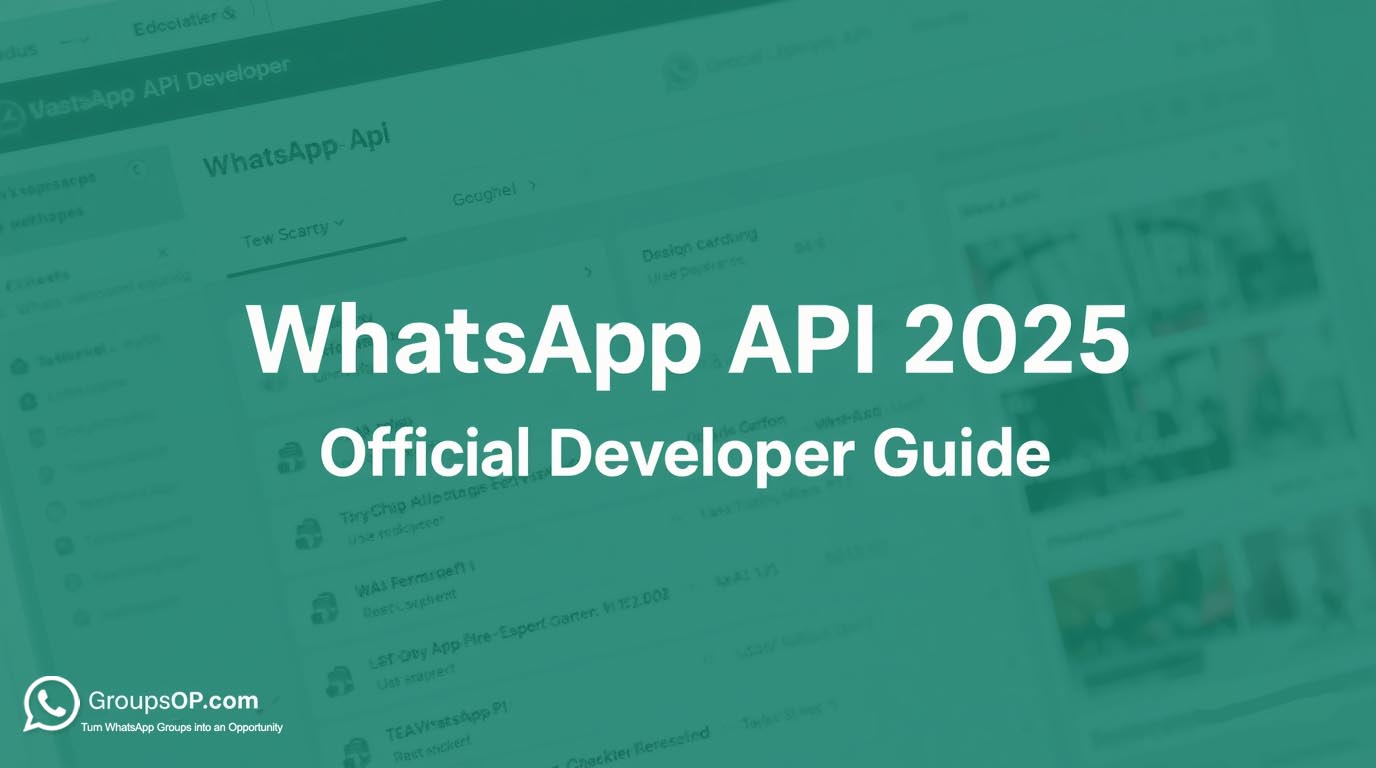As more businesses adopt WhatsApp to talk with customers, the WhatsApp API (also known as WhatsApp Cloud API / Business API) is key for developers building scalable, automated messaging systems.
But in 2025, there have been major updates: new pricing models, deprecated APIs, new features. In this guide, you’ll see how the official WhatsApp API works, how to set it up, what’s changed, and how it applies in real development projects.
Whether you’re building chatbots, sending notifications, or integrating WhatsApp with your backend, this article gives you the up-to-date, developer-level knowledge you need.
⚙ What Is the WhatsApp API?
- WhatsApp API is part of WhatsApp Business Platform, designed for businesses to send and receive messages at scale via API endpoints.
- The Cloud API (hosted by Meta) is now the recommended path; On-Premises API will be deprecated fully by October 2025.
- It doesn’t have a user interface — you integrate via HTTP, webhooks, templates, media upload, etc.
🛠 Setup & Architecture: How Developers Use WhatsApp API
Here’s a breakdown of the steps and components you’ll work with:
| Step | What You Do | Official Reference / Notes |
|---|---|---|
| 1 | Business Verification & WABA | Create a Meta Business Manager, verify business, create a WhatsApp Business Account (WABA) |
| 2 | Choose Cloud API | Use Cloud API instead of On-Premises (On-Premises is being phased out) |
| 3 | Generate Access Tokens / Credentials | Get permanent or short-lived tokens to call API endpoints |
| 4 | Setup Webhooks | Configure callback URLs to receive incoming messages, status updates, etc. |
| 5 | Create & Approve Templates | Templates are pre-approved message patterns for outbound messaging beyond the free window |
| 6 | Send / Receive Messages | Use message endpoints, media upload endpoints, handle errors, retries |
| 7 | Monitor & Analytics | Track delivery, failures, cost, usage metrics |
This is the standard flow — but always check Meta’s official docs for updates.
💰 Pricing & 2025 Changes (Official Info)
Understanding how Meta charges is crucial, because it affects how you design flows and templates.
🔄 Shift from Conversation-Based to Per-Message Billing
- Up to June 2025, WhatsApp used a conversation-based model (charge per 24-h conversation)
- Effective July 1, 2025, Meta will switch to per-message pricing: each template message you send (marketing, utility, authentication) is billed.
- Within the customer service 24-hour window, free-form messages and certain utility templates are not billed.
📋 Message Categories & Rates
Meta classifies message types as:
- Marketing — promotional content (billed always)
- Utility — transactional or update messages (free within 24h, else billed)
- Authentication — OTPs, verification codes (always billed)
- Service / free-form — messages in the 24h window from user-initiated conversation may remain free.
🌍 Regional & Volume Effects
- Prices vary by country / region (Meta publishes rate cards)
- Volume discounts or tiers may apply for high usage in some BSPs (third-party providers)
⚠️ Best Practices & Tips for Developers
- Design message templates carefully. Misclassification or mismatch can cause rejection or extra charges.
- Consolidate messages: try to combine information so you send fewer templates.
- Use webhooks and retry logic to handle delivery failures gracefully.
- Within the 24h service window, you can use free messages — encourage user replies to reset the window.
- Monitor usage & costs regularly through dashboard / analytics.
- Always keep your tokens, webhooks, and API endpoints secure (HTTPS, verification, input sanitization).
- Stay updated on Meta’s changelogs — they occasionally add new events or parameters.
🔗 Promote & Integrate with Platforms Like GroupsOP.com
If you run a WhatsApp channel or group alongside your business messages, you can promote your community using GroupsOP.com:
- Submit your WhatsApp channel or group link via GroupsOP>submit — it goes live instantly, without review.
- Use your API setup to send announcements, new link drops, or community warnings.
- Integrate your channel with your backend so that when new features or updates are available, you broadcast them to both business contacts and group members.
By combining your API power with community reach via GroupsOP.com, you get the best of automated messaging and organic engagement.
Frequently Asked Questions
Q1: What is the WhatsApp Cloud API?
The Cloud API is Meta’s hosted version of the WhatsApp Business API. Businesses can send and receive messages without hosting their own servers.
Q2: When does the pricing change happen?
From July 1, 2025, Meta will switch to per-message billing instead of conversation-based pricing.
Q3: Are messages always billed?
No. Messages within a 24-hour service window (user-initiated) using free-form or utility templates may not be billed.
Q4: Do I need to pre-approve message templates?
Yes. All template messages must be submitted and approved by Meta before sending.
Q5: Can I self-host WhatsApp API?
The On-Premises API is being deprecated and fully sunset by October 2025; Meta recommends using Cloud API.
